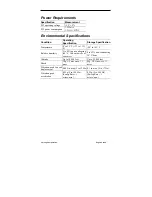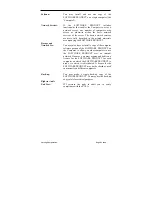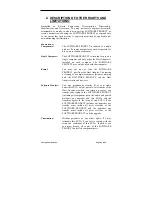
LSI Logic Corporation
Page 37 of 56
VLAN tagging is only required to be enabled on switch ports that
create trunk links to other VLAN capable switches, or on ports
connected to tag-capable end-stations, such as servers or workstations
with ITI5100G/GF adapters.
Configuring VLANs
By default, Alteon WebSystems switches have a single VLAN configured for
every port, which groups all ports into the same broadcast domain, just as if
there were no VLANs at all. This default VLAN has an 802.1Q-1998 VLAN
identification number of [1], with VLAN tagging for the switch port turned
off.
If you are using a VLAN capable switch from another manufacturer, consult
the documentation for your switch before continuing.
To configure VLANs, perform the following procedure:
Note: If you configure a VLAN for an adapter, all traffic sent or received
by that adapter must be in VLANs.
1. Create
the
/etc/hostname.alt
file(s) on the server.
There can be up to four adapters per server, and up to 64 VLANs
defined per adapter.
One
/etc/hostname.alt
<num>
file must be created for each
VLAN that will be configured for each adapter on the server. Create
files using the following naming format:
/etc/hostname.alt
<num>
For each file, the number
<num>
in the filename is determined according
to the table below. For example, the first adapter in the server requires a
file named
/etc/hostname.alt0
for its first VLAN, and a file
named
/etc/hostname.alt100
for its second VLAN.
Up to 64
VLANs
First Adapter
Second Adapter
Third Adapter
Fourth Adapter
1
/etc/hostname
.alt0
/etc/hostname
.alt1
/etc/hostname
.alt2
/etc/hostname
.alt3
2
/etc/hostname
.alt100
/etc/hostname
.alt101
/etc/hostname
.alt102
/etc/hostname
.alt103
3
/etc/hostname
.alt200
/etc/hostname
.alt201
/etc/hostname
.alt202
/etc/hostname
.alt203
















































